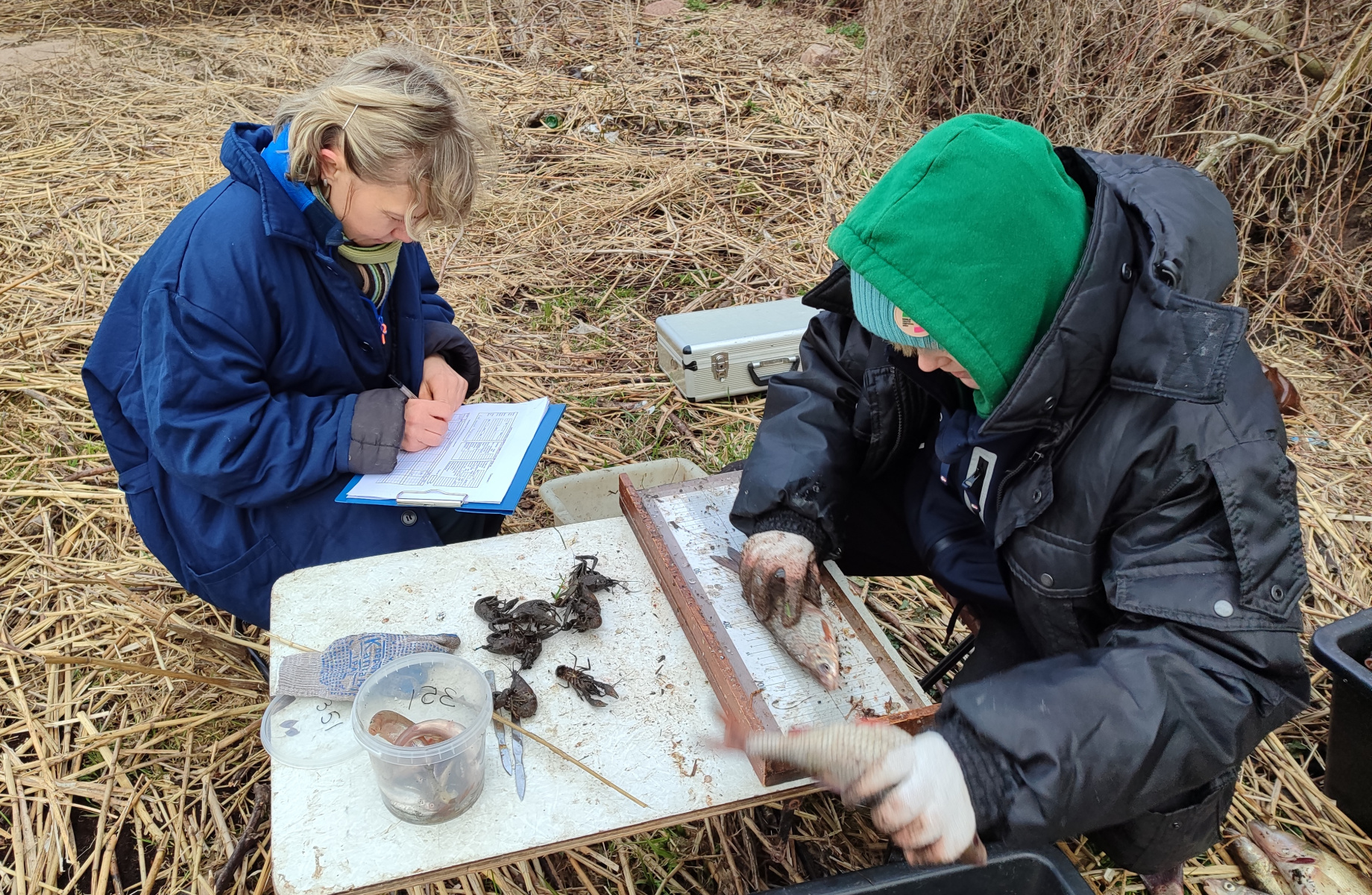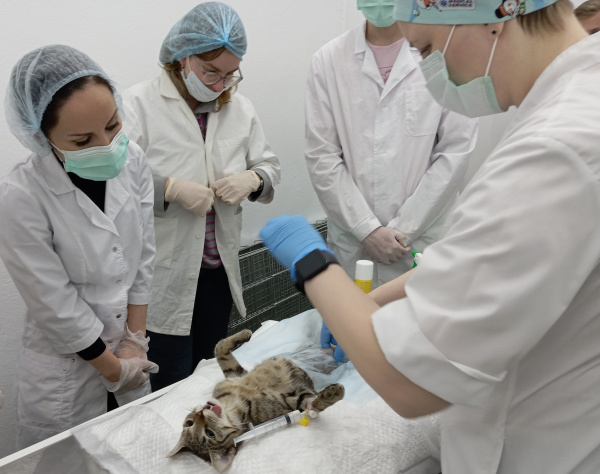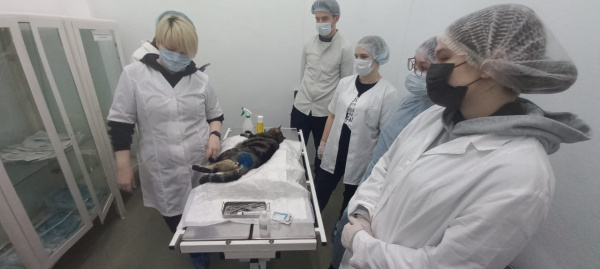KSTU ichthyologists started the field season!

Despite freezing and windy weather in mid-March, a team of ichthyologists went on the first ichthyological survey of this field season. The staff and postgraduate students of the Department of Water Bioresources and Aquaculture carried out work on the Pregola River and floodplain reservoirs within the framework of the state task on monitoring aquatic bioresources and their habitat in inland water bodies.
Upon their arrival at the site, a field camp was set up on the picturesque bank of the Pregolya River in a few minutes to conduct research and organise the scientific team's living and overnight accommodation.
Control fishing was carried out using a set of fishing gear. A set of multi-mesh fixed nets was used to establish species diversity, size structure and assess fish distribution. The nets were set on a daily basis in order to detect the daily migrations of fish in the river and floodplain system. A fry dragnet was used in the coastal part not covered by the net gear. Fry dragnet surveys were conducted under different light conditions at intervals of every four hours. This made it possible to trace the daily dynamics of changes in the structure of fish communities in the shallow water zone.
Based on the results of the surveys, it was established that the fish communities of the Pregolya River in the pre-spawning season are represented by at least ten species, with a predominance of roaches and silver breams.
Biological analysis of the caught fish showed different degrees of fish readiness for the spawning season. For example, pike, as the earliest fish spawning in spring, is physiologically ready for spawning and waits only for favourable spawning temperatures. But roaches are still at the stage of maturation, and it will take about a month to be fully ready for spawning. The vast majority of fish species inhabiting the Pregolya River do not feed during the winter period and spend the reserves accumulated during the growing season. The analysis showed that the wintering period was successful for the majority of fish. There was still fat reserve in the internal organs of fish, which will allow them to wait for favourable feeding conditions without significant weight loss. Some of the caught fish were sent to the research ichthyopathological laboratory for further analysis of parasitofauna and bacterial microflora.
The ichthyological field season is now open, but new water bodies, new tests and new impressions are ahead.




